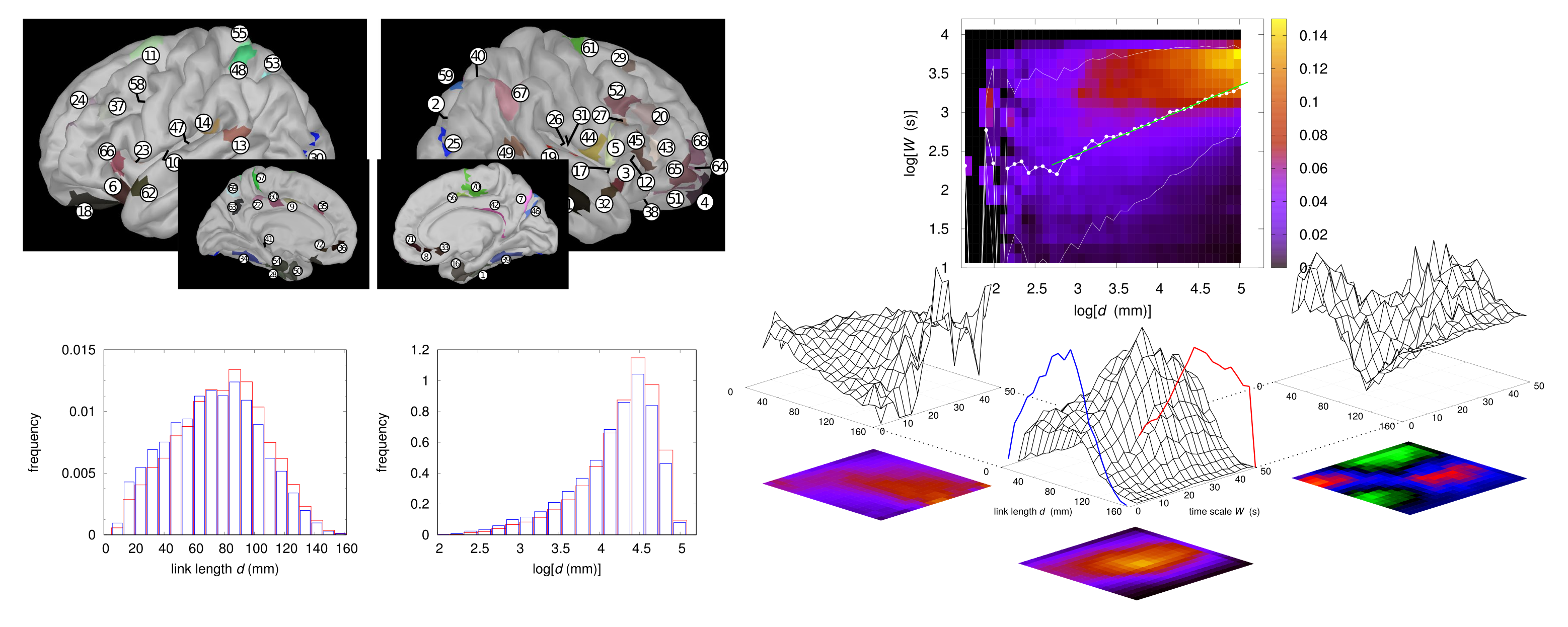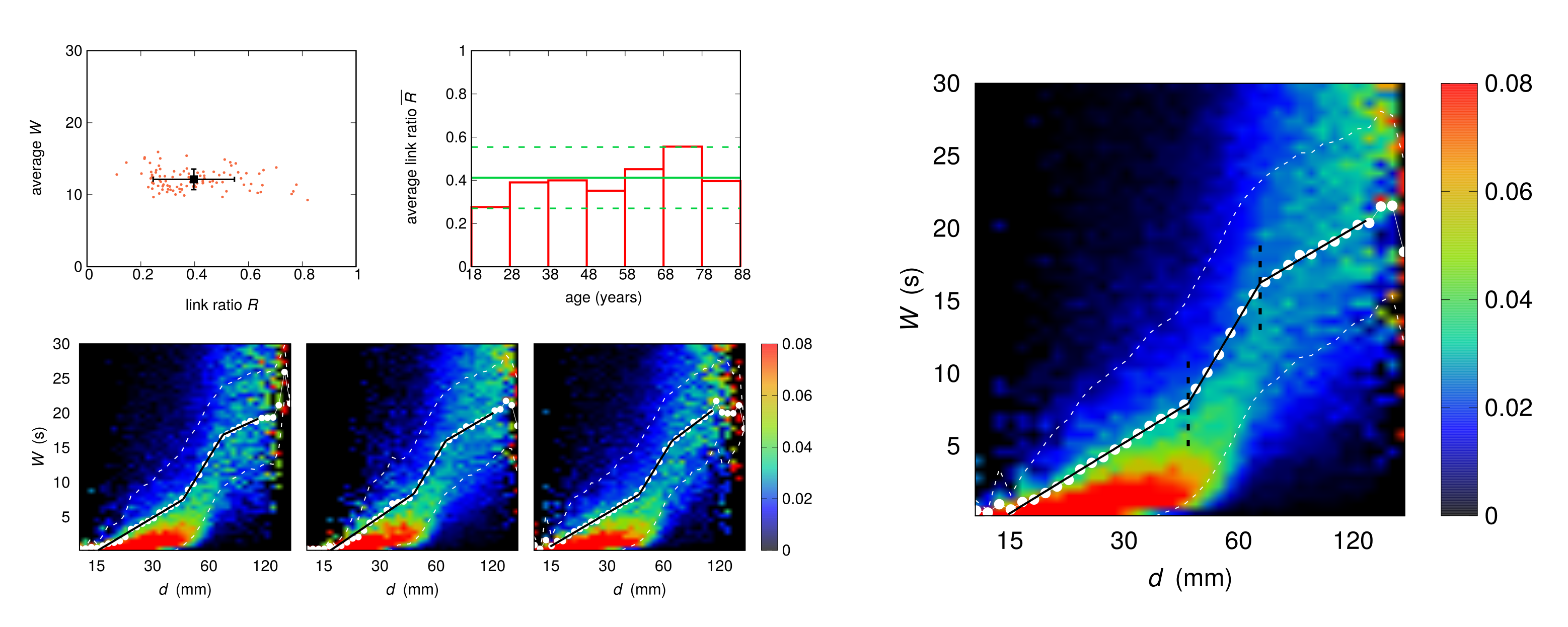Link observability and how to assess it
We proposed a new method to identify network connectivity by relying on a time-domain analysis of the zero-delay Pearson cross-correlation coefficient and the related significance. A main goal is to investigate the time scale at which connectivity shows up. To estimate the significance level of the experimental correlation coefficients and thus the level of connectivity, a stringent and realistic hypothesis evaluated by generating surrogates of the experimental time series was taken into account. By using publicly available MEG time series recorded on healthy subjects in the resting-state, and investigating cross-correlations between network nodes at time scales ranging from 0.5 s to 60 s, we found that network structures similar to those described in the scientific literature are identifiable provided that the correlation window is sufficiently long. The method was published in:
A. Perinelli, D. E. Chiari and L. Ricci, Correlation in brain networks at different time scale resolution, Chaos 28 (2018) p. 063127 doi:10.1063/1.5025242
The method is also available as an open-source software package, the NetOnZeroDXC package (go to the GitHub repository). The package is thoroughly described in:
A. Perinelli, L. Ricci, NetOnZeroDXC: A package for the identification of networks out of multivariate time series via zero-delay cross-correlation, SoftwareX 10 (2019), 100316, doi:10.1016/j.softx.2019.100316


Are observable links between brain nodes due to geometric proximity?
In any network, the dependence of connectivity on physical distance between nodes is a direct consequence of trade-off mechanisms between costs of establishing and sustaining links, processing rates, propagation speed of signals between nodes. Despite its universality, there are still few studies addressing this issue. We applied our cross-correlation method to MEG resting-state recordings and we determined connectivity strength as a function of physical distance between nodes. We found that the dependence of the time scale of observability of a link on its geometric length follows a power–law characterized by an exponent whose extent is inversely proportional to connectivity. These results were published in:
A. Perinelli, D. Tabarelli, C. Miniussi and L. Ricci, Dependence of connectivity on geometric distance in brain networks, Scientific Reports 9 (2019), 13412, doi:10.1038/s41598-019-50106-2
Further insight into the interplay between connectivity and distance
We improved our previous analysis by using a larger dataset containing MEG recordings from 100 healthy subjects in resting-state and, in addition, upgraded analytical tools. Moreover, node pairs were distinguished into inter-hemispheric and intra-hemispheric in order to highlight possible differences in connectivity in cross-hemisphere or intra-hemisphere communication. We obtained evidence of three different regimes of linear dependence of the time scale of observability on the natural logarithm of geometric distance. This result proves to be statistically significant and makes up an interesting base point for further investigation, aiming, for example, at relating the different regimes to the small-world network supported principle of segregated/integrated information processing. These findings were published in:
M. Castelluzzo, A. Perinelli, D. Tabarelli and L. Ricci, Dependence of connectivity on the logarithm of geometric distance in brain networks, Frontiers in Physiology 11 (2021), 611125, doi:10.3389/fphys.2020.611125
